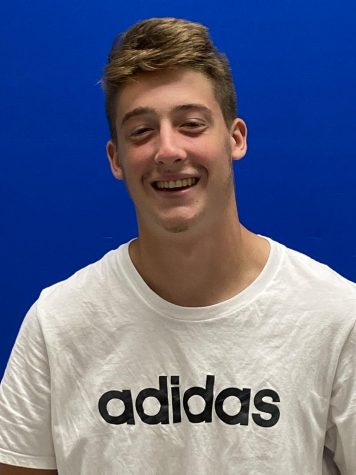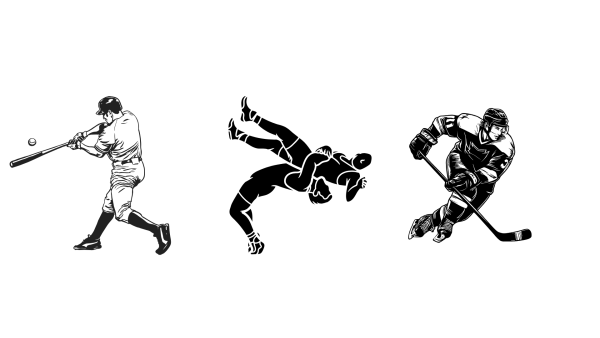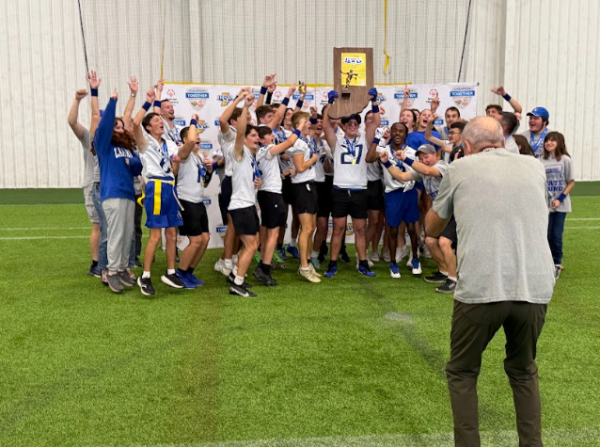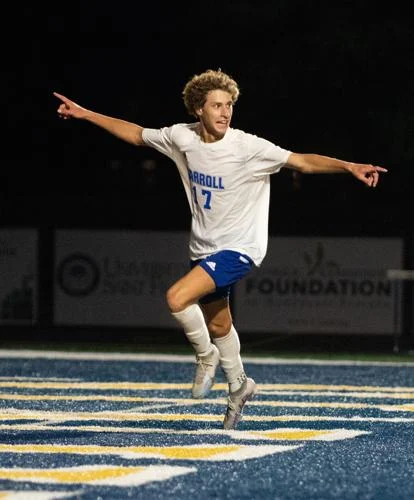Concussions Are No Laughing Matter
You might hear this term a lot in the athletic field: concussions. But what is a concussion?
A concussion is a type of traumatic brain injury, caused by a bump, blow, or jolt to the head or by a hit to the body that causes the head and brain to move rapidly back and forth.
“Most concussions are considered ‘mild,'” said Nurse Kline. “It is a mild brain injury, but depending on the incident it can be a traumatic brain injury. For example, if you hit your head on a doorframe while walking through it, verses falling off a bridge and landing ten feet below or more on your head. Most people who hit their head on a doorframe, will have head pain and tenderness to the area and not have a concussion. But another person might complain of concussion symptoms, and need to see a doctor for evaluation.”
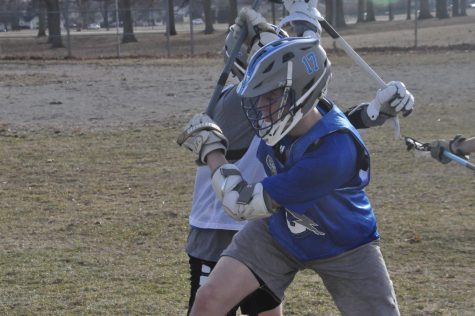
What are some signs of you having a concussion?
“Symptoms may be immediate, or show up hours to days later,” said Nurse Kline. “Commonly reported symptoms are headache, confusion or feeling out of it, memory loss, or trouble concentrating. Others can be light sensitivity, and nausea and vomiting.”
Students who have had concussions in the past described the symptoms they experienced.
“Extreme headache and confusion,” said junior Daniel Riecke.
“I had a sensitivity to sounds, meaning that when I heard sounds they would give me headaches if they were too loud,” said junior Logan Swain.
Many athletes that have or had a concussion go through different symptoms. Some symptoms are more serious than others.
“For the first week or two I was actually talking a lot quieter and talking less than I normally do because if I talked too loud it would hurt my head and give myself a headache,” said Logan.
“I also had ringing in my ears, and it’s exactly what it sounds like, I would be sitting in class or at home doing whatever and my ears would just start ringing and they would be ringing for a few minutes and then just go away, that happened about twice a day for around three weeks.”
“I also felt slower in the things I did, I had a much slower reaction time, I didn’t process things as quickly as I normally did in school, and I just felt tired all the time for a while.”
Logan’s concussion took longer to heal than the other 2 players who had a concussion. While Logan was out for a month, Daniel was out for only a week.
When somebody gets a concussion, panic or anxiety runs through their body. They don’t know what to do. They may ask themselves; how long do I have to sit out for or they get mad at the fact the recovery takes a while.
If you have a concussion, what part of the brain is most likely to be damaged?
“It would most likely be wherever the impact occurred to the skull, but in a concussion, the brain can shift or move in the skull, and so injury can be anywhere,” said Nurse Kline
How long will the recovery take?
“Some doctors recommend 1-2 days of complete rest and then slowly resuming your regular activities,” said Nurse Kline. “They may have patients limit screens from computers, TV, E-reader, phones, etc. until whatever concussion symptoms they were experiencing start to subside…Most people heal from a concussion in about 2 weeks, and some may take a month or so. Most people heal with no permanent effect or symptoms.”
Rarely, people can continue with headache or other symptoms long after most concussions have healed. Repeat concussions can also occur and the more hits the brain takes can cause concern for more permanent damage.
Each concussion is individually treated, based on their reported symptoms. Some are worse than others. You can be out of school or sports longer if your concussion is more serious.
It is common to get a concussion in sports, especially in football because of the more dangerous nature of the sport. Going full speed with shoulder pads and a helmet, it’s hard to stop on a dime, but with your momentum going full force it’s even harder.
In the state of Indiana all football programs must follow this protocol if a player has a concussion. Once all symptoms are gone, the player will enter the concussion protocol to return to play. The steps include:
- Symptom-limited activity
- Light aerobic exercise
- Sport or activity-specific exercise
- Non-contact training drills
- Full contact practice
- Return to sport
At each of these stages, the player must continue to be symptom-free. If the player would regain symptoms of a concussion, then the protocol restarts and would begin again when they are symptom-free.
In what ways can we prevent concussions?
“There is no way to prevent a concussion as you can get a concussion falling in the hall at school or home, etc,” said Dan Ginder. “There is always the risk of injury of any type when you participate.”
According to the state of Indiana, a high school student-athlete, suspected of having sustained a concussion or a head injury in a high school practice or contest in an IHSAA recognized sport should be removed from practice and play at the time of the concussion or head injury is sustained, and be evaluated immediately by an appropriate health care professional, who (i) is an Indiana medical doctor (MD) or doctor of osteopathic medicine (DO) who holds an unlimited license to practice medicine in the state of Indiana.
They must also follow a step‐wise protocol which has provisions for the delay of the return to practice or play based upon the return of any signs or symptoms of concussion or head injury, and d. not return to a practice or play (i) until the high school student-athlete is cleared in writing to return to practice
The same goes for the game of football and the reality is that concussions are not easily preventable.
“However, we can limit the number of concussions by proper education, proper fitting of equipment, use of high quality high rated helmets, limiting the number of contact days during the week, and by teaching proper tackling techniques,” said Coach Dinan.
“Coaches and players have to continue to work on using correct technique in tackling and blocking to prevent concussions,” said Coach McKerr “With that being said, football is a violent sport and preventing injuries 100% of the time is always going to be futile.”
Though we can’t prevent concussions from ever happening again, we can help prevent concussions numbers from increasing.
Scientists have created a few new helmets such as Vicis Zero1, Schutt F7 LTD, and the Riddell Precision-FIT.
The SchuttF7 LTD is now the best-ranked football helmet for safety for 2019. Redesigned with unique anti-friction face masks, three-dimensional movement, TPU cushioning and a Flexural Resistance Shell Design to disperse impacts.
The Vicis Zero1 outperformed 33 other helmets tested for its ability to reduce head impact severity. Vicis Zero1 has a deformable outer shell and a unique RFLX layer designed to slow impact forces like a car bumper while enhancing player performance.
The Riddell Precision-FIT is a new initiative that custom-fits a helmet’s interior padding to a player’s head. The helmets are designed to be more comfortable and provide better performance.
Not only can new equipment limit concussion occurrences, but drills can as well.
“I think that the emphasis needs to be on proper education of proper tackling and limiting the number of contact days per week,” said Coach Dinan.
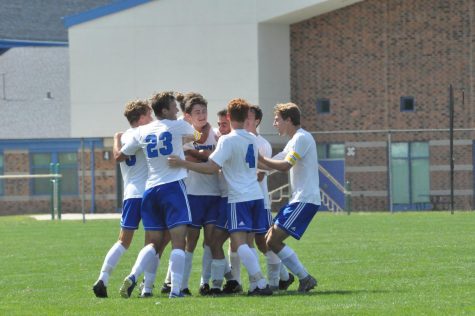
“We can work on what we call “hawk tackling” which was pioneered by the Seattle Seahawks,” said Coach Mckerr. “This primarily focuses on keeping your head out of tackles and tackling with your shoulder. We have seen improvements in our technique in tackling and it lowers the chance of getting a concussion.”
“It comes down to how well trained each person is at what they do, if you do not know how to tackle properly in football,” said Logan. “You give yourself and the other person a higher risk at getting a concussion, people also need to be aware of their surroundings.”
In most concussions in football, the defender or the player who has the ball lowers the crown of their head and hits the defender with great impact, increasing the risk of concussions.
“I went to lower my shoulder to get an extra yard and didn’t see a streaking safety out of the backside of the field until it was too late, and at that point, I just took it and got hit,” said Logan. “You have to fully understand what you’re doing and be properly trained in those situations.”
Once you get a concussion there is a high risk of getting another if the first is not fully healed. Because of this, some parents won’t let their children go back to playing a contact sport after having a concussion.
“I would let them [players with concussions] because hopefully they learn from their mistakes and are more cautious next time,” said Logan. “I would want to make sure that they were honest with me first and knew 100% that they were back and well enough to play, but as long as they were, I would likely leave it up to them if they wanted to continue or not and support them in either decision that they make.”
Some things that can help reduce concussions are limit the number of “headers” in soccer practice or throwing somebody headfirst in wrestling.
Players can also limit the amount of contact in practice for football and strengthen the neck muscles.
Concussions are no laughing matter. It is a serious injury to the brain, and it can cause serious brain damage. That’s why coaches and scientists are trying to make violent sports safer.

